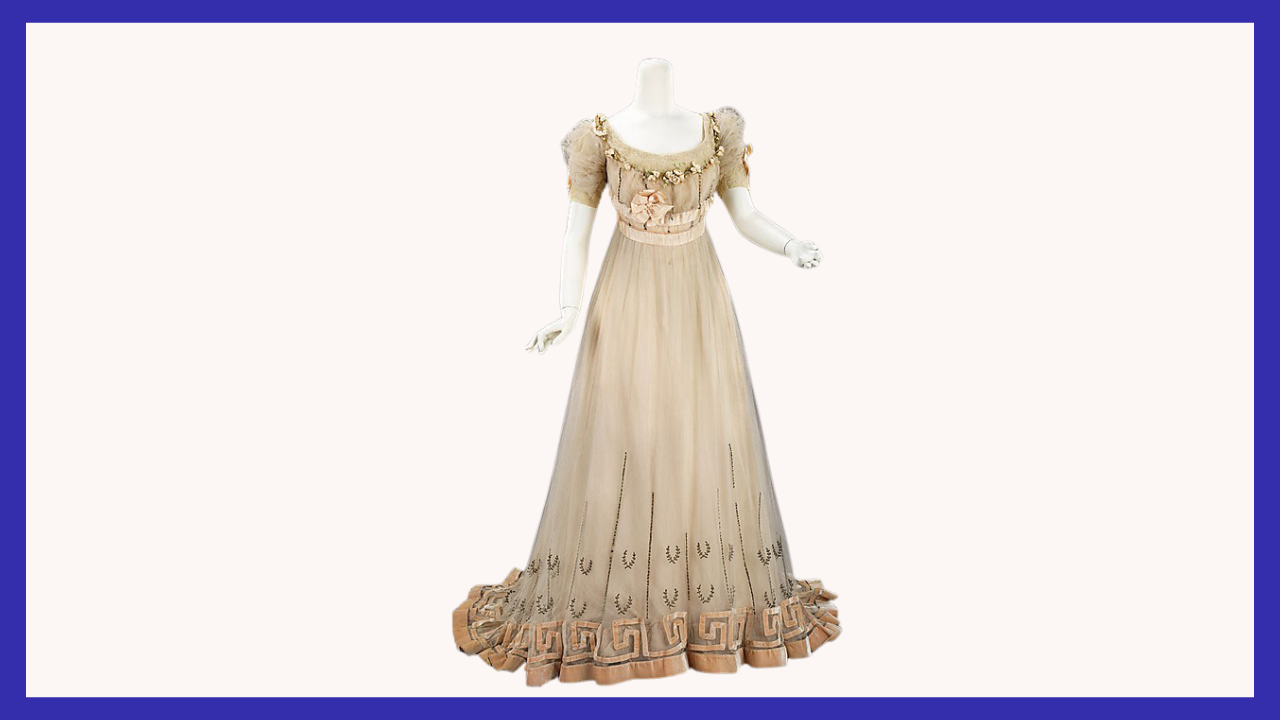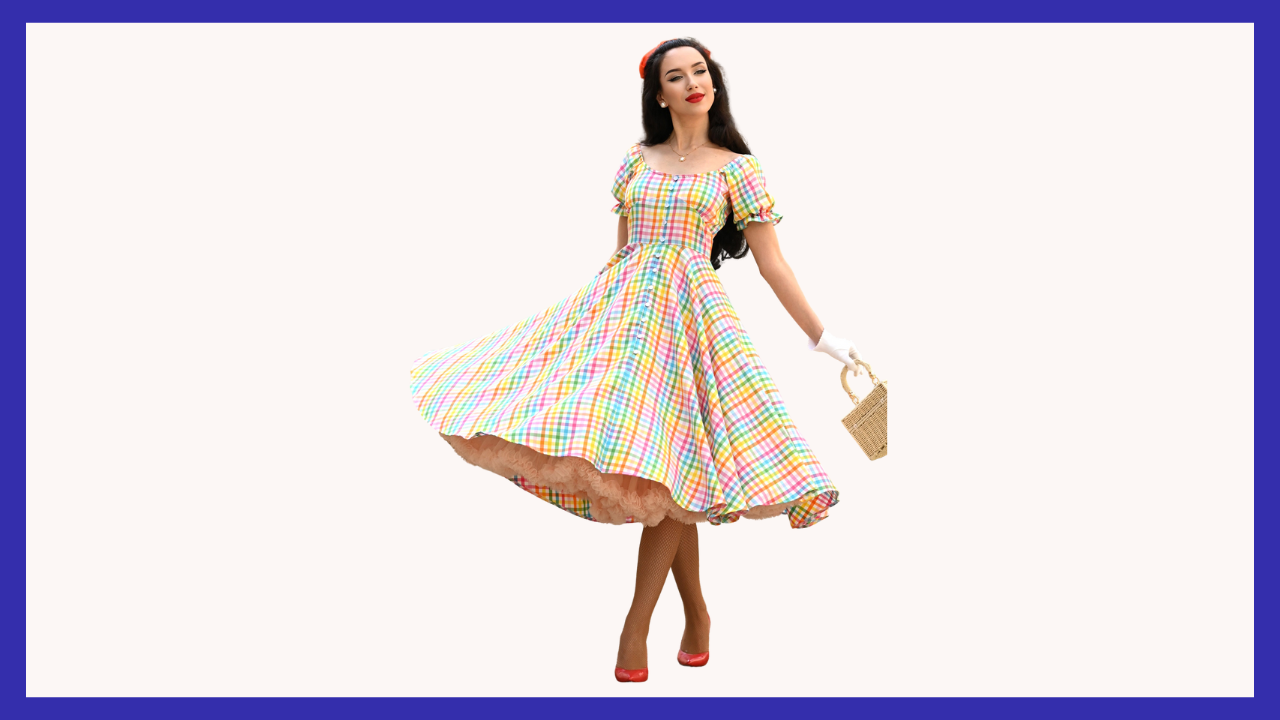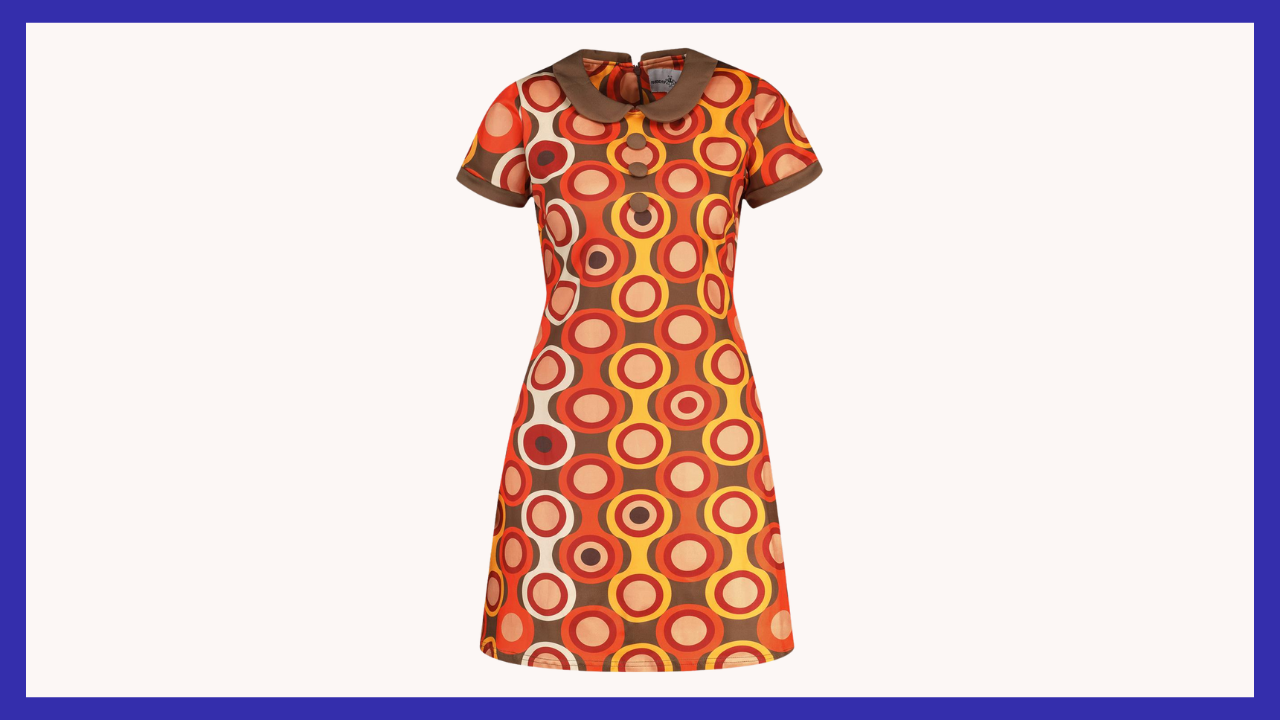AllVintageStyles
The Ultimate Vintage Fashion Encyclopedia
Edwardian Dress

Elaborate dress with S-curve silhouette and high neckline, epitomizing early 20th century feminine elegance through sophisticated construction and decorative excess.
Quick Facts
- Era: 1900s (peak popularity 1901-1910)
- Origin: Britain/Europe (Edwardian period and Gibson Girl aesthetic influence)
- Garment Type: Formal dress with complex Victorian-to-modern transition styling
- Key Identifiers: S-curve silhouette, high lace neckline, long sleeves, elaborate trim details
- Typical Resale Price: $400-$3500 (authentic vintage pieces)
- Best For: Edwardian costume collectors, Gibson Girl enthusiasts, early 1900s fashion advocates
History & Evolution
Edwardian dresses emerged during the transition from Victorian complexity to modern simplicity when King Edward VII's reign (1901-1910) encouraged slightly relaxed social attitudes while maintaining elaborate feminine presentation standards. The style represented sophisticated elegance and the Gibson Girl ideal, featuring the characteristic S-curve silhouette that emphasized tiny waists, full bosoms, and flared hips through expert corsetry and construction techniques. Early versions showcased the era's obsession with decorative details including lace, embroidery, and intricate trim work.
The 1900s established Edwardian dresses as essential formal and semi-formal wear when prosperous society embraced elaborate feminine fashion as symbols of refinement and social status. The style became associated with tea parties, afternoon visits, and formal social occasions, appealing to fashionable women seeking clothing that demonstrated both sophistication and adherence to proper Edwardian social codes. The Gibson Girl aesthetic influenced silhouettes that celebrated confident, educated feminine presentation while maintaining traditional modesty standards.
The 1910s saw Edwardian styling gradually evolve toward simpler silhouettes as Paul Poiret and other designers introduced straighter lines that would define 1920s fashion. The style survived in formal and wedding contexts throughout the 1910s before being largely replaced by World War I practical fashion. Contemporary designers occasionally reference Edwardian elements in romantic fashion, but authentic period pieces represent extraordinary craftsmanship and cultural artifacts that reflect the final flowering of elaborate feminine fashion before modern simplification.
Authentication Tips
Authentic 1900s-1910s Features:
- Hand-sewn construction throughout with silk thread using Edwardian tailoring techniques
- S-curve silhouette requiring proper corsetry and internal structure for authentic proportions
- Elaborate trim details including authentic lace, embroidery, or beadwork with period construction
- Quality silk, wool, or fine cotton fabrics with Edwardian weave and dyeing characteristics
- Complex internal construction with multiple layers, boning, and structured support systems
Common Reproductions/Modern Pieces:
- Machine construction with synthetic threads inappropriate for authentic Edwardian dressmaking
- Modern fitted construction without proper S-curve silhouette and corsetry requirements
- Simplified trim details or machine lace lacking authentic Edwardian elaborate handwork
- Contemporary synthetic fabrics or modern weaves not available during Edwardian production
- Simplified internal construction without authentic layering and structural support systems
Styling & Use Cases
- Best for Edwardian collectors: Display as museum-quality examples of early 1900s fashion sophistication and Gibson Girl aesthetic
- Ideal for period events: Wear for Edwardian tea parties, historical presentations, and early 1900s themed occasions with proper undergarments
- Perfect for costume historians: Study as documentation of transition from Victorian to modern fashion during Edwardian social evolution
Modern styling tips:
- Treat as precious historical artifact requiring proper Edwardian undergarments including corsets for authentic S-curve silhouette
- Focus on period-accurate accessories including high-collar styling, elaborate hats, and Edwardian footwear for complete presentation
- Consider professional conservation consultation for valuable pieces due to age, complexity, and delicate trim work
FAQ
Q: How can I tell if an Edwardian dress is authentic early 1900s construction?
A: Check for hand-sewn construction with silk thread, S-curve silhouette requiring proper corsetry, elaborate authentic trim details like handmade lace, quality Edwardian fabrics with period characteristics, and complex internal construction with boning and structured support.
Q: What's the typical price range for vintage Edwardian dresses?
A: Authentic Edwardian dresses range from $400-3500 depending on condition, trim complexity, and construction quality. Museum-quality pieces with exceptional handwork command premium prices among Edwardian fashion and Gibson Girl collectors.
Q: How should I care for a vintage Edwardian dress?
A: Professional textile conservation is essential due to age and delicate trim work, store in archival conditions with proper support for elaborate construction, handle carefully to preserve lace and embroidery details, and consult conservation specialists for cleaning needs.
Q: What makes vintage Edwardian dresses valuable to collectors?
A: Historical significance representing transition from Victorian to modern fashion during early 1900s social evolution, superior hand-sewn construction with elaborate trim work reflecting authentic Edwardian craftsmanship, cultural documentation of Gibson Girl aesthetic and S-curve silhouette ideals, and extreme rarity due to age and complex preservation challenges from century-old garments with delicate decorative elements.
📷: Glamour Daze



